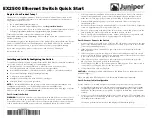
1-17
z
The authorization method specified with the
authorization default
command is for all types of
users and has a priority lower than that for a specific access mode.
z
RADIUS authorization is special in that it takes effect only when the RADIUS authorization scheme
is the same as the RADIUS authentication scheme. In addition, if a RADIUS authorization fails, the
error message returned to the NAS says that the server is not responding.
z
With the
radius-scheme
radius-scheme-name
local
or
hwtacacs-scheme
hwtacacs-scheme-name
[
local
|
none
] keyword and argument combination configured, local
authorization or no authorization is the backup method and is used only when the remote server is
not available.
z
If the primary authorization method is
local
or
none
, the system performs local authorization or
does not perform any authorization; it will never use the RADIUS or HWTACACS authorization
scheme.
z
The authorization information of the RADIUS server is sent to the RADIUS client along with the
authentication response message; therefore, you cannot specify a separate RADIUS authorization
server. If you use RADIUS for authorization and authentication, you must use the same scheme
setting for authorization and authentication; otherwise, the system will prompt you with an error
message.
Configuring AAA Accounting Methods for an ISP Domain
In AAA, accounting is a separate process at the same level as authentication and authorization. Its
responsibility is to send accounting start/update/end requests to the specified accounting server.
Accounting is not required, and therefore accounting method configuration is optional.
AAA supports the following accounting methods:
z
No accounting: The system does not perform accounting for the users.
z
Local accounting: Local accounting is implemented on the access device. It is for collecting
statistics on the number of users and controlling the number of local user connections; it does not
provide statistics for user charge.
z
Remote accounting: The access device cooperates with a RADIUS server or HWTACACS server
for accounting of users. You can configure local accounting as the backup method in case the
remote server is not available.
By default, an ISP domain uses the local accounting method.
Before configuring accounting methods, complete these three tasks:
1) For RADIUS or HWTACACS accounting, configure the RADIUS or HWTACACS scheme to be
referenced first. The local and none authentication methods do not require any scheme.
2) Determine the access mode or service type to be configured. With AAA, you can configure an
accounting method specifically for each access mode and service type, limiting the accounting
protocols that can be used for access.
3) Determine whether to configure an accounting method for all access modes or service types.
















































